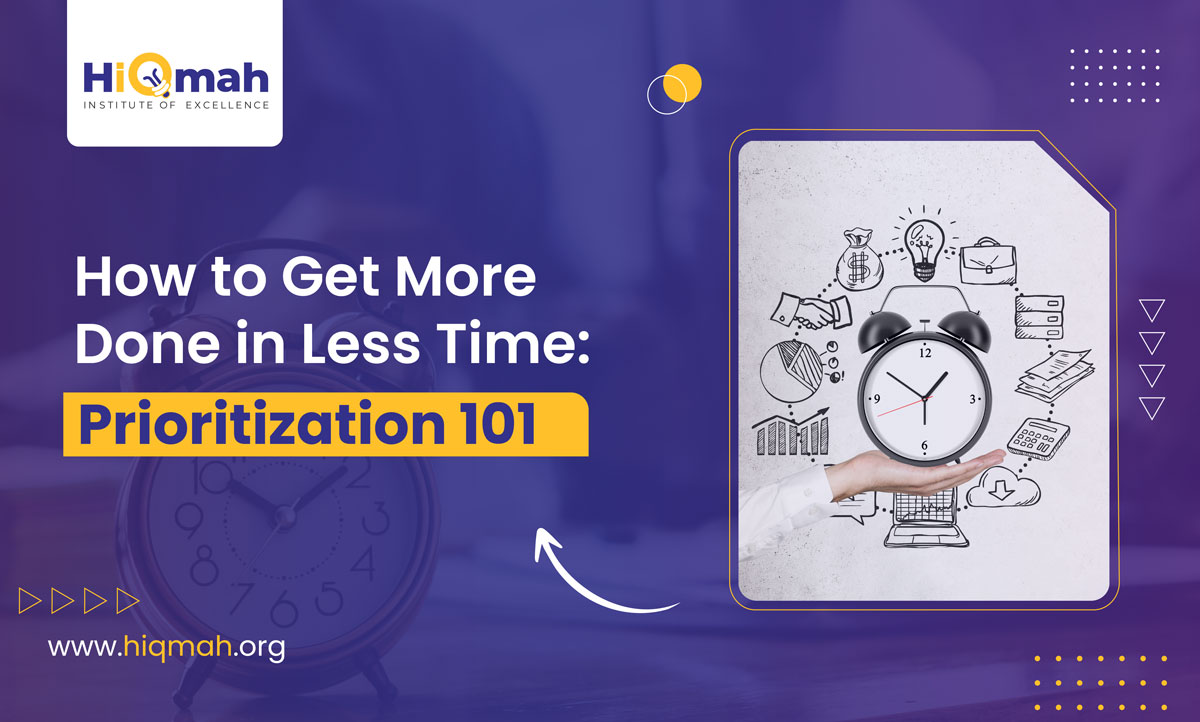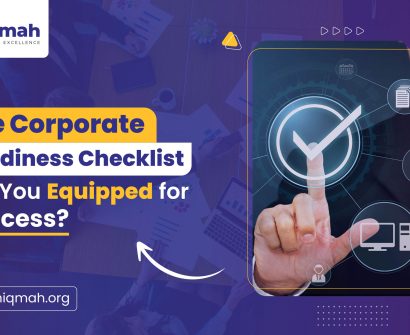
Entering the corporate world often means juggling multiple responsibilities with tight deadlines. For new graduates, mastering prioritization can be the key to achieving goals, reducing stress, and avoiding burnout. Research by the American Psychological Association shows that effectively managing time and setting priorities reduces workplace stress by up to 40%. In this blog, you’ll learn actionable steps to prioritize effectively and enhance productivity, setting a strong foundation for career growth. Prioritization is an essential skill in today’s fast-paced work environments, allowing you to focus on high-impact tasks and work smarter, not harder.
Steps to Prioritization 101
- Define Clear Goals
Clear goals serve as your compass, guiding you toward purposeful actions rather than a scattering of effort. Outline clear short-term and long-term goals before starting activities or tasks. Begin with what you want to achieve – completing a project, enhancing your skills, or planning a vacation. Breaking these into actionable steps gives a definitive roadmap.
For instance, if your goal is to get fit, you would initiate daily practices such as exercising for 30 minutes or preparing healthy meals.
- Categorize and Rank Tasks
Facing a mountain of tasks? Use the Eisenhower Matrix to classify them into four categories:
- Urgent and Important: Tasks needing immediate attention, like meeting deadlines.
- Important but Not Urgent: Activities that build long-term success, like learning new skills.
- Urgent but Not Important: Interruptions like non-essential emails.
- Neither Urgent Nor Important: Time-wasters like excessive social media scrolling.
This ranking system ensures your time is spent on what truly matters. Prioritize tasks from the first two categories and delegate or eliminate the rest. The goal is to create a focused workflow that maximizes results without overwhelming you.
- Break Down Large Tasks
Large projects can be so intimidating that many people tend to avoid them. Dividing large tasks into smaller ones helps to make them easier to manage.
For instance, instead of “Plan a company event,” take on the task, “Book a venue,” or “Send invites.” Ticking off those steps would give one the feeling of accomplishment, thus giving good momentum, even making such huge projects achievable. This approach also reduces stress, as you’re no longer staring at a massive task but instead working through manageable portions.
- Use the 80/20 Rule (Pareto Principle)
Pareto Principle This states that 80% of your outputs come from 20% of your efforts. Focus on those high-impact activities.
For example, if a limited number of clients generate most of your income, devote more time to them. It calls for working smarter rather than harder by channeling your energies toward efforts that generate the greatest return on investment. Taking out unnecessary efforts frees up time to concentrate on what works.
- Avoid Multitasking
Multitasking can reduce productivity by as much as 40% due to the refocusing time of the brain with each switch of the task. Instead, try single-tasking: concentrate fully on one task until it is done.
To write a report, avoid reading emails or answering calls. Use time-blocking or the Pomodoro technique to get back on track. Remember, quality over quantity leads to better results.
- Set Realistic Deadlines
Unrealistic deadlines cause stress and rushed results. Instead, set timelines based on task complexity. For instance, if creating a presentation requires research, design, and practice, allocate time for each phase rather than squeeze everything into a day. Realistic deadlines help you stay on track, reduce anxiety, and ensure that your work is thorough. Rewarding yourself for meeting them helps boost motivation.
- Limit Distractions
Distractions are productivity killers. Emails, notifications, and social media can distract a person even when he or she is completely focused. Set up a “focus zone” for yourself by turning off all notifications, using website blockers, or establishing some set work hours.
Maintain an organized workspace and minimize clutter so visual distractions are few. Noise-canceling headphones or a quiet workplace can help out if you need a super-concentrated environment for specific work. The fewer distractions, the more you can work.
- Batch Similar Tasks
Context switching drains mental energy since it requires significant mental exertion. You can group related tasks instead and maintain focus and efficiency.
For instance, dedicate a particular period to responding to all emails, making all calls, or reviewing documents. That makes your workflow neat, keeps your mind focused on one category of activity, and eradicates the stop-start nature of multitasking to make your day more productive.
- Learn to Say “No”
Overcommitting causes burnout and diluted efforts. One of the strong time management skills is the ability to say “no” while being polite. Saying no is not about getting away from responsibilities but rather saving your energy for things that count. For example, if asked to take on a task that doesn’t align with your priorities, respond with, “I’d love to help, but I’m currently focused on another project.” This approach allows you to set boundaries without damaging relationships.
- Regularly Review and Adjust:
Time management isn‘t a set-it-and-forget-it process. Time management isn‘t a set-it-and-forget-it process. For instance, take 10 minutes at the end of each day to reflect on what you accomplished and plan for tomorrow. Similarly, conduct weekly reviews to evaluate whether your goals and methods are aligned. This flexibility helps you adapt to changing circumstances and ensures you remain on track without feeling overwhelmed.
Prioritization isn’t about doing more but about focusing on what truly matters. By learning to prioritize effectively, you’ll gain a stronger handle on your workload, experience less stress, and ultimately accomplish more. Remember, becoming a productivity pro takes practice and consistency.
If you’re interested in mastering prioritization and other essential skills, consider our Corporate Readiness Program at HiQmah, which offers in-depth training on productivity, time management, and more.
Join our Proposal Development Training today and set yourself up for success!





